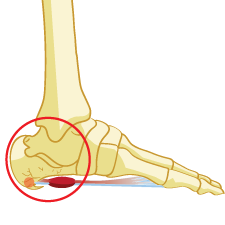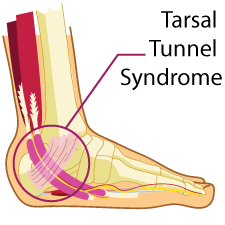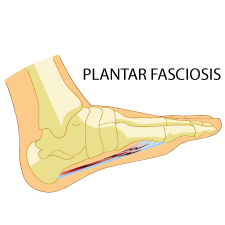You may think you have Plantar Fasciitis because you have foot pain, but you may actually have one of these conditions:
Heel Spurs
Heel Spurs are often confused with Plantar Fasciitis as the pain is located in the same area — right below the heel of the foot. The symptoms of Heel Spurs are also similar to those of Plantar Fasciitis. These symptoms include pain during the first steps in the morning, pain after long periods of sitting or standing, and pain that goes away after several minutes on your feet. People with Heel Spurs are also more likely to develop Plantar Fasciitis at the same time.
also more likely to develop Plantar Fasciitis at the same time.
Heel Spurs are bony protrusions which cause pain and reduced mobility. During each footfall, this bony protrusion is jabbing into the soft tissue of your heel. Heel Spurs can develop due to several different factors, including improper footwear, excess weight or spending prolonged periods standing.
Heel Spurs are usually treated conservatively with Rest, Ice, Compression & Elevation. If this doesn’t work, surgery to remove the spurs may be recommended, but this should always be a last resort.
Tarsal Tunnel
 Many people have not heard of Tarsal Tunnel Syndrome, so they may just assume they have Plantar Fasciitis until they get a formal diagnosis from a healthcare professional. Tarsal Tunnel Syndrome involves the compression of a nerve — the posterior tibial nerve — located on the inside of the ankle. The compression of the posterior tibial nerve causes numbness in the inside of the ankle and bottom of the foot. Other symptoms include a tingling or burning sensation and pain. Tarsal Tunnel Syndrome is similar to a condition called Carpal Tunnel Syndrome that occurs in the wrist.
Many people have not heard of Tarsal Tunnel Syndrome, so they may just assume they have Plantar Fasciitis until they get a formal diagnosis from a healthcare professional. Tarsal Tunnel Syndrome involves the compression of a nerve — the posterior tibial nerve — located on the inside of the ankle. The compression of the posterior tibial nerve causes numbness in the inside of the ankle and bottom of the foot. Other symptoms include a tingling or burning sensation and pain. Tarsal Tunnel Syndrome is similar to a condition called Carpal Tunnel Syndrome that occurs in the wrist.
Causes of Tarsal Tunnel include having flat feet, having a ganglion cyst or varicose vein inside the tunnel, a sprained ankle, or diseases such as diabetes and arthritis.
When it comes to treating Tarsal Tunnel, conservative methods are usually effective. This includes RICE, NSAIDs (such as Advil and Aleve), physical therapy and proper footwear. If conservative treatment fails to help, corticosteroid injections can be used to temporarily relieve symptoms, but there are a variety of risks and side effects that come with steroid injections, including skin discoloration, tendon rupture and bone death.
Plantar Fasciosis
Plantar Fasciosis is the degenerative form of Plantar Fasciitis. Unlike Plantar Fasciitis, Plantar Fasciosis does not involve inflammation. If you have Plantar Fasciosis, this means that your plantar fascia tissue has begun to tear at the heel bone. Symptoms of Plantar Fasciosis include heel pain and pain that is worse in the morning with the first few steps of the day. Pain may also be pronounced after long periods of sitting or standing.
Causes of Plantar Fasciosis include excess weight, improper footwear, flat feet, high arches and increased activity level. Treating the cause of your Plantar Fasciosis should work to relieve your symptoms. This may include wearing shoes that fit properly (or that are not worn out), cushioning your footwear with heel and ball supports, losing weight, or doing proper warm-ups before exercising.